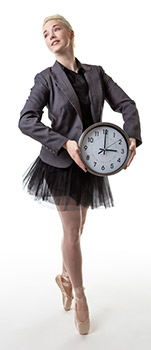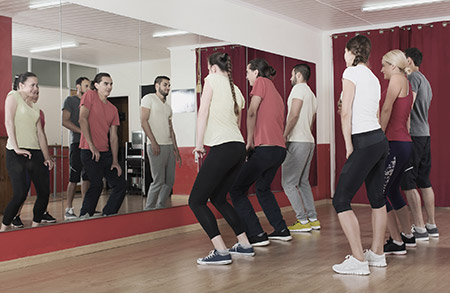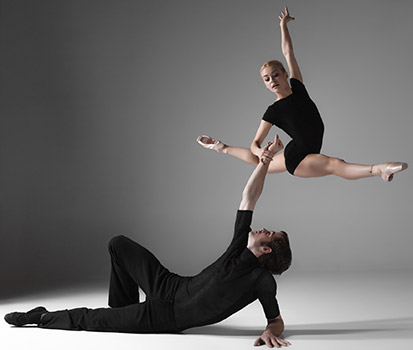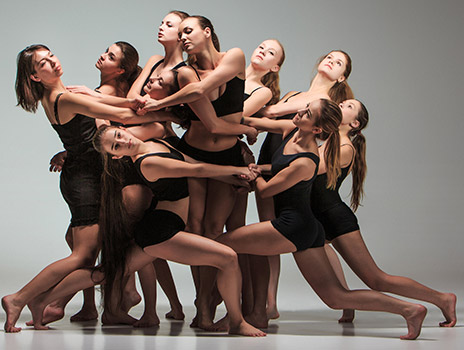Learn

Time
Time is the duration of the movement in a dance. It is an element of movement that is used by dancers and choreographers to create contrast, balance, and patterns in dance.

Time can be organized in the following ways:
- Beat is the ongoing, underlying pulse that occurs repeatedly and with certain frequency in dance. Beat is the basic unity that measures time in choreography and music. When dancing, beats are what the dancer counts when they move.
- Tempo expresses the frequency of the beat of any rhythmic pattern in numbers in dance. It is how fast or slow the dance movements are. For example, Tempo = 60 or Tempo = 120 means that there are 60 or 120 beats in a minute. The higher the number, the faster the tempo.
- Accent refers to strong beats that occur at regular intervals. Accent is also demonstrated when a dancer actively uses his or her body to create a strong movement or gesture.
- Rhythmic Patterns are patterns made by arranging long and short movements or strong and light movements in dance. There are many different rhythmic patterns that can be used at different tempos and speeds such as:
- Metered time is a repeated rhythmic pattern often used in music (like 2/4 time or 4/4 time). If dances are done to music, the movement can respond to the beat of the music or can move against it.
- Free Rhythm is a rhythmic pattern that is less predictable than metered time. Dancers may perform movement without using music, relying on cues from one another. There isn’t any real organization in free rhythm.


Other Time
Time can also be organized in other ways.
- Clock time is used to think about the length of a dance or parts of a dance measured in seconds, minutes, and hours. For example, a dance may be assigned a time of 30 seconds in which all the choreographed movement must fit. A performance of a dance in a public setting may be set up to continuously repeat between 12:00 Noon and 1:00 PM, which is literal time.
- Timing Relationships (Sensed time) is when dancers move in relation to each other. Dancers are able to pick up on each other’s timing. For example, dancers may gradually increase from a walking tempo to a running tempo by cueing off of each other rather than the musical score. Another example is when dancers hold a group shape and then spontaneously move out of it based on the impulse or feeling of the group.

- Event-Sequence is when an internal or external event signals a change. An example would be when a dancer repeats a movement or phrase over and over again until the other dancers arrive in the corner of the stage or another location. Dancers take cues from each other to start the next phrase or listen for music cues to begin again. You may have witnessed this when someone scores a touchdown and starts dancing while the crowd is cheering.


Example
Watch the video Seeds of Wind (1:17) to see how the dancers incorporate time into their performance. When you open the link, you will need to scroll to the bottom of the page to see the video.

